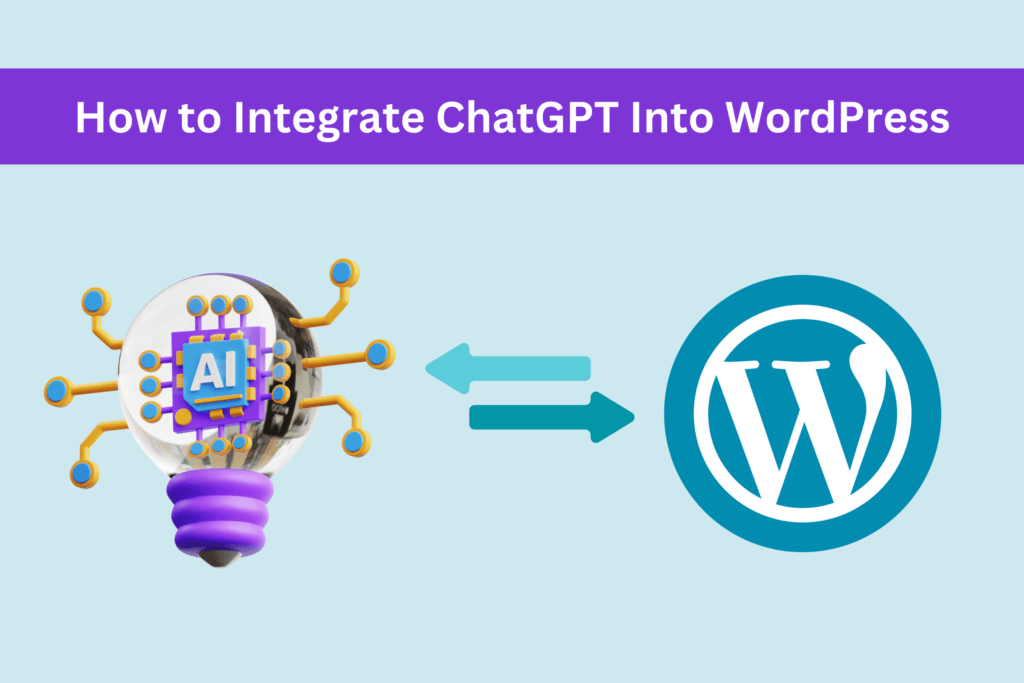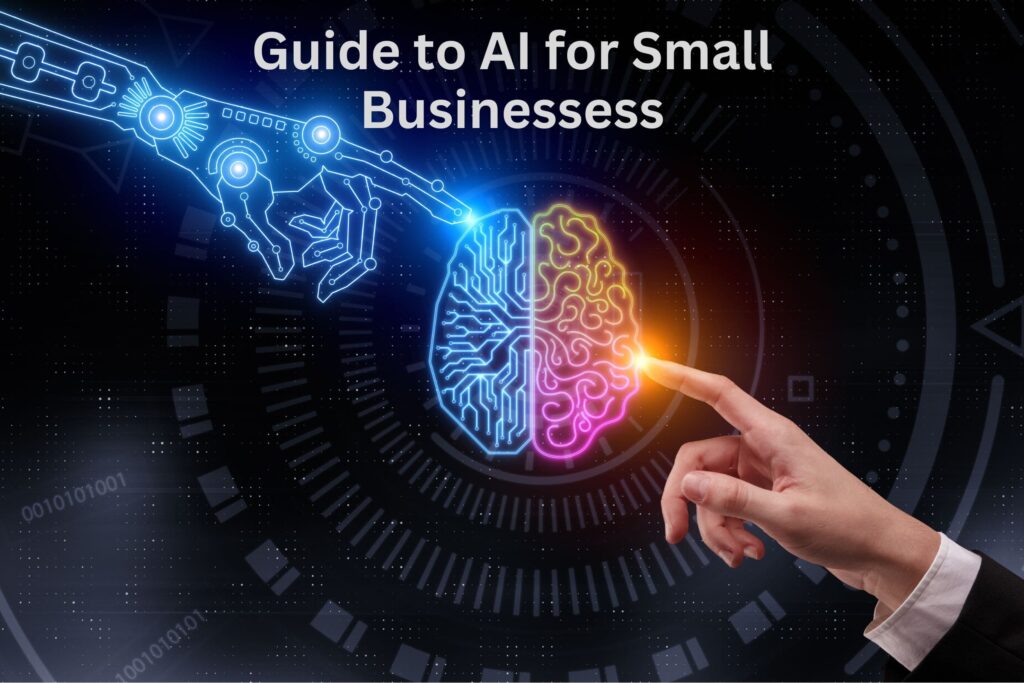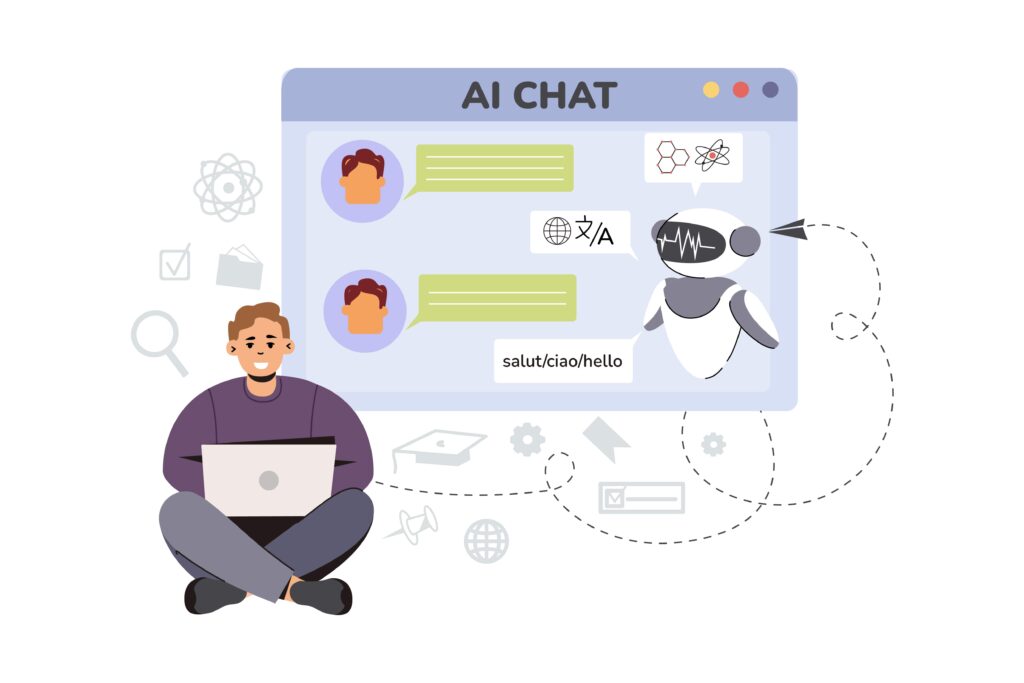ChatGPT has revolutionized online interactions, making websites more engaging and responsive. Adding ChatGPT to your WordPress site can enhance user experience, provide automated assistance, and even streamline content creation. In this guide, we will walk you through the steps to integrate ChatGPT into WordPress effortlessly.
Integrating ChatGPT into WordPress can revolutionize user interactions by enabling dynamic content generation and AI-driven engagement. Whether you’re looking to enhance customer support, create automated blog content, improve site navigation, or streamline processes for digital signature certificate businesses, adding ChatGPT to your WordPress site opens a world of possibilities. AI-driven automation can assist in verifying digital documents, handling customer inquiries about certification processes, and ensuring compliance with legal and security standards, making it an invaluable tool for digital signature certificate providers.
In this beginner’s guide, we’ll walk you through the step-by-step process of embedding ChatGPT seamlessly into WordPress. From plugin selection to API integration, you’ll learn how to leverage AI to boost your site’s functionality, improve user experience, and drive more traffic. Let’s get started!
- Why Integrate ChatGPT into WordPress?
- Methods to Integrate ChatGPT into your WordPress
- Step-by-Step Guide: Adding ChatGPT to Your WordPress Site
- Method 1: Integrate ChatGPT Using a WordPress Plugin (Easy & Beginner-Friendly)
- Method 2: Integrating ChatGPT via OpenAI API (For Developers)
- Method 3: Adding ChatGPT via a Widget or Shortcode (No Coding Required)
- Method 4: Custom AI Chatbot Development (For Advanced Users)
- Method 5: Using Third-Party Chatbot Services
- Best Plugins for Seamless ChatGPT Integration in WordPress
- Troubleshooting Common Issues in ChatGPT WordPress Integration
- Optimizing AI Responses for Better User Experience
- Final Thoughts on Integrating ChatGPT into WordPress
Why Integrate ChatGPT into WordPress?
Integrating ChatGPT into WordPress can transform your website by enhancing user engagement, streamlining content creation, and improving customer interactions. By integrating ChatGPT into WordPress, you tap into the power of AI to create a smarter, more efficient, and highly interactive website. AI tools for research can also complement ChatGPT’s capabilities, enabling deeper analysis, structured content generation, and fact-based insights that enhance blog posts, customer support responses, and site navigation. Here’s why adding ChatGPT to your WordPress site is a game-changer.
- Automate Customer Support: ChatGPT can handle common queries, provide instant responses, and assist users 24/7, reducing the workload on human support teams while improving response times.
- Generate High-Quality Content: Whether it’s blog posts, product descriptions, or FAQs, ChatGPT helps generate well-structured, SEO-friendly content, keeping your site fresh and informative.
- Improve User Experience: AI-driven chatbots can guide visitors through your site, recommend relevant articles, and offer personalized assistance, creating a smoother and more interactive experience.
- Boost Engagement & Retention: By answering queries instantly and interacting dynamically with visitors, ChatGPT can keep users engaged longer, reducing bounce rates and increasing conversions.
- Enhance Productivity for Site Owners: From drafting email responses to brainstorming content ideas, ChatGPT automates time-consuming tasks, allowing website owners to focus on strategy and growth.
- SEO Benefits: AI-generated responses can help maintain an active website, contribute to keyword-rich content, and improve rankings, driving more organic traffic to your WordPress site.
Methods to Integrate ChatGPT into your WordPress
Integrating ChatGPT into WordPress can be done using various methods, depending on your technical expertise and specific requirements. Here are the most effective ways to get it up and running:
- Using a WordPress Plugin: Several WordPress plugins allow you to embed ChatGPT effortlessly. Plugins like WPBot, AI Engine, or Chatbot WP provide ready-made solutions with customizable chatbot features. Simply install, activate, and configure the settings for seamless integration.
- Embedding ChatGPT via API: For more flexibility, you can integrate ChatGPT using OpenAI’s API.
- Adding ChatGPT via a Widget or Shortcode: Some chatbot services offer embeddable widgets or shortcodes that you can paste into your WordPress pages. This method requires little coding, making it a quick and user-friendly option.
- Custom AI Chatbot Development: If you need a tailored solution, you can develop a custom chatbot using OpenAI’s API, JavaScript, and PHP. This option gives you full control over functionality, design, and user interaction.
- Using Third-Party Chatbot Services: Services like Tidio, Drift, or Botsify integrate AI chatbots into WordPress without requiring deep technical knowledge. These tools offer easy setup and customization.
Step-by-Step Guide: Adding ChatGPT to Your WordPress Site
Method 1: Integrate ChatGPT Using a WordPress Plugin (Easy & Beginner-Friendly)
For beginners, using a plugin is the simplest approach. Follow these steps:
1. Install a ChatGPT Plugin
- Go to WordPress Dashboard > Plugins > Add New.
- Search for “ChatGPT WordPress Plugin”.
- Choose a well-rated plugin (e.g., WP Chatbot, AI Engine).
- Click Install and then Activate.
2. Configure the Plugin
- Navigate to the plugin settings via the WordPress admin panel
- Enter your OpenAI API key (some plugins require it).
- Customize chatbot behavior, responses, and interface.
3. Embed the Chatbot in Your Site
- Insert a chatbot widget into pages/posts using shortcodes.
- Adjust appearance to match your site design.
4. Test and Optimize
- Visit your website and interact with ChatGPT.
- Modify responses and enhance chatbot behavior based on user feedback.
Method 2: Integrating ChatGPT via OpenAI API (For Developers)
For more advanced customization, you can directly use OpenAI’s API.
1. Get OpenAI API Credentials
- Sign up at OpenAI and create an account.
- Get your API key from OpenAI’s dashboard.
2. Add Custom Code in WordPress
- Go to WordPress Dashboard > Plugins > Add New Plugin > Code Snippets or use functions.php.
- Add a script like this:
function chatgpt_response($user_input) {
$api_key = "YOUR_OPENAI_API_KEY";
$url = "https://api.openai.com/v1/completions";
$data = array(
"model" => "text-davinci-003",
"prompt" => $user_input,
"max_tokens" => 150
);
$options = array(
'http' => array(
'header' => "Content-Type: application/json\r\nAuthorization: Bearer $api_key",
'method' => 'POST',
'content' => json_encode($data)
)
);
$context = stream_context_create($options);
$result = file_get_contents($url, false, $context);
return json_decode($result, true)["choices"][0]["text"];
}3. Display AI Responses on Your Site
- Create a chat interface using HTML and JavaScript.
- Call the API function when users input a question.
Optimize for Performance & Accuracy
- Refine prompt engineering to get better AI-generated responses.
- Monitor API usage to avoid exceeding OpenAI limits.
Method 3: Adding ChatGPT via a Widget or Shortcode (No Coding Required)
1. Find an AI Chatbot Service
- Look for platforms that offer embeddable chat widgets, like Tidio, Drift, or Botsify.
2. Generate Widget Code
- Sign up for the chatbot service.
- Configure your bot’s behavior and appearance.
- Get the embed code (JavaScript snippet or shortcode).
3. Embed in WordPress
- Paste the JavaScript snippet into Appearance > Widgets > Custom HTML.
- Alternatively, place a shortcode in Pages or Posts for simple integration.
4. Verify Functionality
- Interact with the chatbot to ensure proper setup.
- Adjust settings for better engagement.
Method 4: Custom AI Chatbot Development (For Advanced Users)
1. Set Up a Development Environment
- Use PHP, JavaScript, and OpenAI API to build a chatbot.
- Install WordPress locally for testing.
2. Develop Chatbot Logic
- Write a function that sends user queries to OpenAI’s API.
- Store previous conversations for context-aware responses.
3. Integrate AI Model with WordPress UI
- Design a custom chatbot interface using CSS/HTML.
- Connect chatbot responses dynamically via AJAX.
4. Enhance AI Capabilities
- Train ChatGPT with custom prompts for better responses.
- Optimize caching to reduce API request costs.
Method 5: Using Third-Party Chatbot Services
1. Choose a No-Code Chatbot Platform
Options like Botsify, Chatfuel, or MobileMonkey allow easy AI chatbot creation.
2. Set Up Chatbot Interactions
- Customize pre-defined responses.
- Link the chatbot to OpenAI API if advanced AI features are needed.
3. Embed on Your WordPress Site
- Use shortcodes, widgets, or simple script embeds.
4. Monitor Performance
- Analyze chatbot interactions and refine responses.
- Use analytics tools to measure engagement.
Best Plugins for Seamless ChatGPT Integration in WordPress
Integrating ChatGPT into WordPress can elevate user engagement, automate responses, and improve content creation. To achieve this, several plugins offer seamless integration, making it easy to implement AI-driven chatbots.
Each of these plugins offers unique benefits, making it easier to integrate ChatGPT into WordPress for automated responses, improved engagement, and a smarter user experience. Whether you need a simple chatbot for customer support or a fully customizable AI assistant, these plugins provide a seamless way to bring ChatGPT capabilities to your WordPress site.
Here are some of the best plugins to consider:
1. WPBot AI Chatbot

WPBot is an AI-powered chatbot plugin for WordPress that provides automated live chat support, lead generation, and user interaction without requiring coding. It can be integrated with OpenAI’s ChatGPT, DialogFlow, or used with built-in features to enhance customer engagement and streamline communication.
Key Features
- Automated Live Chat Support – Provides 24/7 assistance to website visitors.
- Lead Generation & Data Collection – Captures user information through conversational forms.
- OpenAI ChatGPT Integration – Supports the latest ChatGPT models for AI-driven responses.
- Customizable Responses – Allows users to modify chatbot interactions for personalized engagement.
- Multi-Language Support – Works with any language, including RTL compatibility.
- Integration with CRMs & Webhooks – Compatible with Zapier, HubSpot, and Fluent CRM.
- Onsite Retargeting – Displays special offers and coupons based on user behavior.
- Conversational Forms Addon – Enables booking, scheduling, and data collection.
- Security & Spam Control – Limits responses based on keyword inclusion/exclusion.
2. AI Engine

AI Engine is a powerful WordPress plugin that seamlessly integrates AI capabilities into your website. It enables users to create chatbots, generate content, translate text, and even produce AI-driven images—all within the WordPress dashboard. Designed for both beginners and advanced users, AI Engine supports multiple AI models, including OpenAI’s GPT, Anthropic’s Claude, and Google’s Gemini, offering flexibility and customization for various use cases.
Key Features
- Chatbots – Easily create interactive AI-powered chatbots with customizable themes and conversation flows.
- AI Forms – Build AI-driven forms that handle text, images, audio, and file uploads for advanced user interactions.
- Copilot for WordPress Editor – Get real-time AI suggestions, translations, and content rewrites directly in the editor.
- Image & Translation Tools – Generate AI-created images and translate content seamlessly within WordPress.
- Fine-Tuning & Embeddings – Train AI models to match your domain or style for smarter interactions.
- Function Calling – Connect AI models to WordPress functions, enabling users to book appointments or interact with store data.
- Memory Tracking & Discussions – Store and analyze chatbot conversations for improved AI responses.
- Multi-Provider Support – Works with OpenAI, Anthropic, Google, Hugging Face, and more for AI model flexibility.
3. ChatBot – WP AI Chat Bot Plugin

ChatBot AI Platform is an all-in-one chatbot solution designed for WordPress, enabling businesses to automate customer interactions, generate leads, and provide instant support. With no coding required, users can create, deploy, and optimize AI chatbots effortlessly. The platform integrates with multiple channels, including websites, Facebook Messenger, and Slack, ensuring a seamless customer experience.
Key Features
- No-Code Chatbot Creation – Easily build and deploy AI chatbots without technical expertise.
- Multi-Channel Integration – Works across websites, Facebook Messenger, Slack, and more.
- Customizable Chat Widget – Adjust chatbot appearance to match your brand identity.
- AI-Powered Responses – Uses machine learning and large language models for accurate replies.
- Lead Generation & Customer Support – Automates inquiries, collects user data, and schedules meetings.
- Self-Learning AI Model – Trains on provided business data for improved accuracy.
- Drag-and-Drop Builder – Simplifies chatbot setup with a visual interface.
- Enterprise-Grade Security – Ensures data protection and reliable AI performance.
- Automated Workflows – Handles support tickets, redirects to live agents, and promotes products.
4. Tidio

Tidio is an all-in-one customer experience solution that combines live chat, AI chatbots, and multichannel communication to enhance user engagement and support. Designed for businesses and online stores, Tidio helps convert passive visitors into active buyers by providing instant assistance, automated responses, and seamless customer interactions.
Key Features
- Live Chat Support – Engage visitors in real-time with customizable chat widgets.
- Lyro AI Chatbot – Automate up to 70% of customer inquiries with AI-driven responses.
- Pre-Built Chatbots – Use ready-made chatbot strategies to boost sales and resolve queries.
- Multichannel Communication – Manage messages from email, Messenger, WhatsApp, and Instagram in one dashboard.
- WooCommerce Integration – Preview carts, check order history, and recommend products directly in chat.
- Automated Workflows – Handle support tickets, send discounts, and streamline customer interactions.
- Mobile-Friendly Interface – Works seamlessly on desktops, tablets, and mobile devices.
- Powerful Helpdesk System – Manage and resolve customer requests efficiently with email ticketing.
- Easy WordPress Integration – Install and set up Tidio in under 30 seconds.
5. AYS ChatGPT Assistant

The AYS ChatGPT Assistant plugin is an AI-powered chatbot designed to enhance WordPress websites by providing automated responses, content generation, and customer support. It allows users to interact with an intelligent chatbot that learns from website content, ensuring relevant and accurate answers. The plugin also supports AI-driven content creation, making it a valuable tool for bloggers, businesses, and developers looking to streamline communication and automate tasks.
Key Features
- AI-Powered Chatbot – Provides instant responses based on website content.
- Content Generation – Creates high-quality blog posts, articles, and marketing copy.
- Programming Assistance – Generates HTML, CSS, Java, Python, and other code snippets.
- 24/7 Automated Support – Handles customer inquiries without human intervention.
- Website Content Learning – Adapts to embedded site data for accurate responses.
- Multilingual Support – Communicates in multiple languages for global accessibility.
- Customizable Chat Interface – Allows users to modify chatbot appearance and behavior.
- Embedding Feature – Connects with Pinecone for advanced AI learning capabilities.
- Security & Spam Control – Ensures safe and controlled chatbot interactions.
Troubleshooting Common Issues in ChatGPT WordPress Integration
Integrating ChatGPT into WordPress can significantly enhance site functionality, but users may encounter challenges during setup. Here are some common issues and their solutions:
1. API Key Not Working
If your OpenAI API key isn’t functioning, ensure that:
- You’ve entered the correct key in the plugin settings.
- Your API usage is within OpenAI’s limits.
- There are no conflicts with other plugins affecting API requests.
2. Chatbot Not Responding or Loading Slowly
Slow responses can be due to:
- Excessive API requests causing delays—optimize prompts for efficiency.
- Server performance issues—ensure your hosting can handle the requests.
- Plugin conflicts—disable other chatbot or AI plugins to resolve incompatibility.
3. Formatting or Styling Issues
If ChatGPT responses appear broken or unformatted:
- Check plugin settings for customization options.
- Use custom CSS to adjust chatbot appearance.
- Ensure your WordPress theme supports chatbot widgets.
4. Security & Spam Concerns
To prevent misuse:
- Restrict chatbot queries to relevant topics using prompt control.
- Implement CAPTCHA or authentication for certain interactions.
- Monitor and log chatbot activity to detect unusual usage.
5. OpenAI API Limitations
Ensure you’re using the right model and plan for ChatGPT. Some limitations include response length restrictions, token usage, and potential downtime from OpenAI.
By proactively troubleshooting these common issues, you can ensure a smooth integration and optimal chatbot performance.
Optimizing AI Responses for Better User Experience
To maximize the impact of ChatGPT on your WordPress site, consider these optimization techniques:
1. Fine-Tune ChatGPT Prompts
Modify the chatbot’s initial prompt to set expectations and guide responses:
- Define clear instructions to improve AI-generated replies.
- Use structured prompts that align with your website’s purpose.
2. Customize User Interaction
Enhance engagement by:
- Personalizing responses based on visitor queries.
- Implementing follow-up questions to encourage conversations.
- Enabling rich media support (links, images, or formatted text).
3. Improve Response Speed
- Reduce unnecessary API calls for quicker chatbot interactions.
- Cache AI-generated responses when possible to reduce load time.
- Use optimized hosting services to handle API requests efficiently.
4. Maintain Accuracy & Relevance
Avoid generic or incorrect responses by:
- Limiting AI interactions to relevant topics.
- Updating the chatbot’s predefined instructions regularly.
- Reviewing user interactions and refining prompts accordingly.
5. Ensure a Natural Conversational Flow
To keep users engaged, design a chatbot that feels intuitive:
- Incorporate greeting messages and context-aware responses.
- Balance concise answers with detailed explanations when needed.
- Adjust AI model parameters to favor coherence and relevance.
By implementing these strategies, you can enhance user satisfaction, boost engagement, and create an AI-driven experience that feels natural and beneficial.
Final Thoughts on Integrating ChatGPT into WordPress
Adding ChatGPT to your WordPress site can revolutionize user interaction, automate responses, and enhance content creation. Whether you integrate it through plugins, API connections, or custom development, the benefits of AI-powered engagement are undeniable.
To ensure a seamless experience, choose the integration method that best fits your technical expertise and website goals. Optimizing chatbot responses, troubleshooting common issues, and refining AI prompts will help create an intelligent, user-friendly assistant tailored to your audience.
As AI continues to evolve, ChatGPT’s capabilities will expand, making it an even more valuable tool for website owners, business consultants, and content creators. By implementing AI strategically, you can elevate your WordPress site, improve customer engagement, and stay ahead of digital trends.
Read More:
Best 360 Panorama Viewer Plugins for Your WordPress Website
How to Get a Digital Signature Certificate: A Comprehensive Guide



